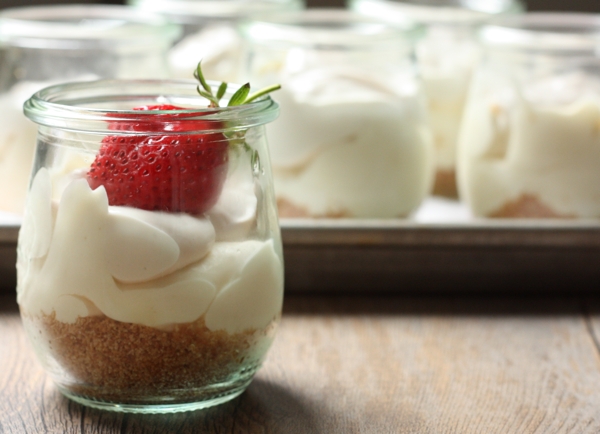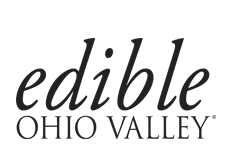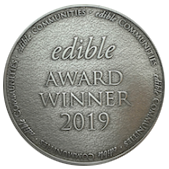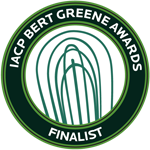Recently, my editor for the fitness and weight-loss website SparkPeople.com challenged me with a rather difficult assignment: Develop a feature story about sensible alternatives for desserts and sweet snacks. Now, this particular subject was hard to write about for a couple of reasons:
First, our bodies are programmed to equate sweet flavor with essential energy in the form of calories. At a fundamental level, sweet = survival. It’s hard to ignore our cravings.
Second, a lot of the low-calorie or “diet” desserts and sweet snacks out there are packed with artificial sweeteners and flavorings. Medical research shows that fake sugar likely causes weight gain, not loss. Why? The taste of artificial sweeteners coupled with our perception of lower calories cause us to overeat. Furthermore, sweetness without calories doesn’t fully signal the same reward/satiety response in our bodies and brain, and if we’re not biologically satisfied by a food, we’re triggered to eat more.
So, how to a) satisfy our sweet cravings, b) maintain a healthy weight and c) avoid fake sugar? [Told you: this was no simple assignment.]
My recommendations?
- It’s OK to eat dessert after dinner or grab a cookie for a pick-me-up. Depriving yourself isn’t a real solution.
- Make sweets an occasional treat, not a daily routine.
- Watch the portion size. (For an afternoon sweet treat, I love Clif Mini Energy Bars in the brownie flavor: perfectly sized, super filling and just 100 calories.)
- Eat whole foods with real sugar; skip the diet sodas and fake sweeteners.
- Opt for homemade, and choose recipes that are naturally lower in fat and/or sugar and high in beneficial nutrients.
Which brings me to this recipe. On SparkRecipes, I found several great lower-calorie dessert recipes like these rich chocolate brownies made with whole grains and sweetened with dried fruit, or this 150-calorie chocolate mousse made with Greek yogurt. But I wanted to include a good, lower-fat cheesecake recipe for those who love that classic combo of creamy and tangy. I wanted a cheesecake recipe that contained natural ingredients (no fake frozen topping, thankyouverymuch). So I cobbled together several low-fat cheesecake recipes to come up with this version using low-fat cottage cheese in place of cream cheese, with a modest amount of whipped cream to maintain the richness and heft. I have to say: It’s good. Really good. And at about 263 calories (vs. upward of 400 calories for the full-fat version), this lighter cheesecake won’t wreck your healthy eating goals.
As a bonus, I made individual servings in the adorable Weck tulip jelly jars—which made this cheesecake seem extra special and helped with portion control.
lighter classic cheesecake
(serves 8)
for the crust
5 1/2 (about 3 ounces) low-fat honey graham crackers
2 Tbsp. butter, melted
1 Tbsp. packed brown sugar
for the filling
1 envelope unflavored gelatin
1/2 cup low-fat milk
1 egg
1/2 cup sugar or Domino sugar/stevia blend (which has half the calories)
1 cup low-fat small-curd cottage cheese
1 tsp. pure vanilla extract
1 tsp. fresh lemon juice
1 Tbsp. freshly grated lemon zest
3/4 cup heavy whipping cream
for the topping
1 cup plain non-fat Greek yogurt
1/4 cup powdered sugar
1 tsp. pure vanilla extract
For the crust: Preheat oven to 350 degrees. Crumble the graham crackers into the bowl of a food processor and pulse to create fine crumbs. Add brown sugar and melted butter; process until the crumbs are evenly saturated with butter. To make a single pie crust: Press the crumb mixture firmly into the bottom of a 9-inch regular pie dish. Bake 10–12 minutes, until crust begins to brown slightly. To make lighter cheesecake in a jar: Divide crumb mixture evenly among 8 Weck tulip or other glass jelly jars; press firmly into place using a measuring tablespoon. Transfer jars to a glass baking dish; pour water into the baking dish to the depth of about 1 inch. Bake for 10–12 minutes. Let crust cool before filling.
For the filling: Pour milk into a saucepan; sprinkle gelatin over the top and let sit 5 minutes to soften. Whisk well to combine, then whisk in sugar (or sugar/stevia blend) and egg. Over medium-low heat, bring the milk mixture just to a boil, whisking constantly. Remove pan from heat and place it in a sink filled with 1 inch of cold water to hasten cooling. Cool milk mixture to room temperature. Meanwhile, in a food processor pulse the cottage cheese until it’s completely smooth. Transfer milk mixture to processor and blend thoroughly. Add vanilla extract, lemon juice and zest and blend well.
In the bowl of a stand mixer (or using a bowl and hand mixer or whisk), whip cream to soft peaks. Spoon about 1/3 cup of whipped cream into cottage cheese mixture and fold gently to lighten the mixture, then gently fold in the rest of the whipped cream to fully incorporate.
Spoon filling into prepared crust; transfer to the refrigerator and chill for at least 1 hour. Whisk together the Greek yogurt, powdered sugar and vanilla; spoon or spread the topping over the cheesecake. Top with fresh berries to serve.






These look great!
I love Sparkpeople! I’ve been using that site off and on again for a few years now to keep track of what I’ve been eating. It’s a really great site.
This is not only adorable, but sounds sooo tasty!
Pingback: Strawberry jam (again). | writes4food | recipes and writing about food, wellness, creativity